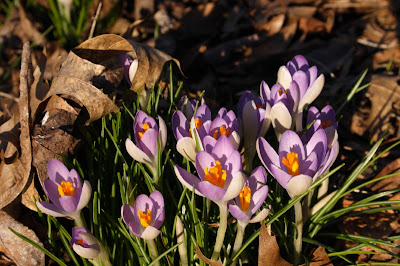It's about 7 P.M. February 29, 2012. I've just come back from the local wetland site of the peeper ponds. It's raining and the temperature is about50 ⁰ F (about 10⁰ C): good conditions for the annual emergence of the peepers. I listened carefully and I think I heard two widely separated peeps. That's justification enough for me to make this posting. Tomorrow the temperature is predicted to be about ten degrees F higher, and sometime during the day the big choruses should start.
http://www.youtube.com/watch?v=aH5pT3If_nA
What are peepers? They're small (almond-sized) frogs. For well over a century peepers were known as Hyla crucifer; in fact, the vernacular name hylas is still used. But in modern arrangements they are called Pseudacris crucifer. I attended an Episcopalian funeral recently and was intrigued to see that there is a participant in the ceremony called the crucifer. The word literally means cross bearer. The frog merits the name because of the big X on its back.
Here's a link to a recording I made last April at the same ponds. The sound of the peepers is accompanied by images of tommies, Crocus tommasinianus.http://www.youtube.com/watch?v=aH5pT3If_nA
















